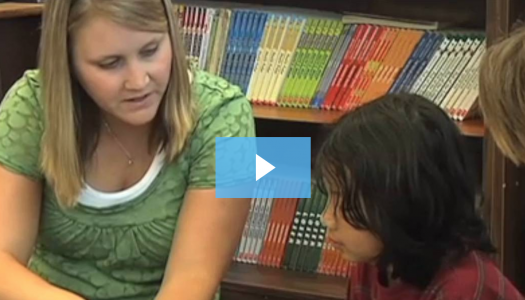Read to Self for Multilingual Students
Join Our Community
Access this resource now. Get up to three resources every month for free.
Choose from thousands of articles, lessons, guides, videos, and printables.
Pam Schaff and Liliya Stefoglo
Read to Self continually develops students’ cognitive ability to interact with a text and interpret it at their highest level in any language.
Read to Self is one of the components in Daily 5 that allows students the necessary time to grow as readers and thinkers. For a student just beginning to learn a new language, this time can cause anxiety and undue stress that may result in undesired classroom behaviors. However, effort to learn more about a language learner can shift practice and create an inclusive learning space in which all languages are valued and used in instruction to lower the affective filter and accelerate learning.
Consider this scenario: A student from Korea joins a third-grade classroom and is identified as a beginning/emergent English language learner. During Read to Self, the student is exposed to level A–B texts in English and begins acting out. Reteaching the I-chart does not seem to work, but conversations with the student and her parents reveal that she attends Korean school every Saturday and is literate in that language. In fact, the student is reading Harry Potter and the Sorcerer’s Stone in Korean. The student’s behavior stems from her embarrassment and frustration with being given “baby books” during Read to Self.
How many students’ potential is not being realized during Read to Self?
Below are four strategic ways to create inclusive Read to Self opportunities for multilingual students.
- Know your multilingual students.
- Meet with a district/school multilingual (ML) specialist to unpack the meaning of the English language assessment data collected upon enrollment and/or review the data from the annual state language test. Dig beyond that information into a student’s literacy experiences in their heritage language. Collaborate with your ML specialist on initial goals and strategies to support the student’s cognitive development using both literacies during Read to Self.
- Connect with the student’s family face-to-face, by phone, or even through a home visit to learn more about their literacy experiences in their heritage language. Use the interpretation services of your district and/or school as needed to support this conversation.
- Listen and learn about the family’s cultural perspectives on literacy. Use conversation starters such as “Share with me your child’s school experience in your home country” or “Please share any literacy experiences your child has had or enjoys at home.” No matter what their experiences have been, it is critically important not to impose your own biases. Every family’s literacy journey is unique, and it might not fit into what you consider normal.
- Provide access to texts in students’ heritage language.
- Access the student’s home library: Ask permission to house a few of their own books in the classroom for the purpose of Read to Self.
- Access the school and/or public library. If texts are not available, Title III funds can be used to purchase texts in a student’s heritage language. Reach out to your ML specialist or director to learn more.
- Access e-books or other literature available in your school written in the student’s heritage language. For example, Zing is an online resource with books available in various languages. (See below for additional multilingual resources.)
- Translate an existing English text in the student’s heritage language using Google Translate, Microsoft Immersive Reader, or the iTranslate app. These tools can translate any English text into various languages.
- Help the student make a book. Students can partner with a teacher, family member, or classmate to create an engaging text in their heritage language, English, or both languages. With translation tools, books can be created by adding words, phrases, and text to existing titles.
- Provide English texts with strong picture support for which the student has interest and schema. This is an opportunity to use the Read the Picture strategy from Three Ways to Read a Book. Teach the student to use translation devices to label various items in the illustrations in both their first language and English.
Tip: Have the student read to their family, thus moving them beyond an inclusive classroom to an inclusive community.
With intentionality, Read to Self will be a highly engaging and effective way to continue to accelerate multilingual students’ literacy and metacognitive skills in both their heritage language and English.







